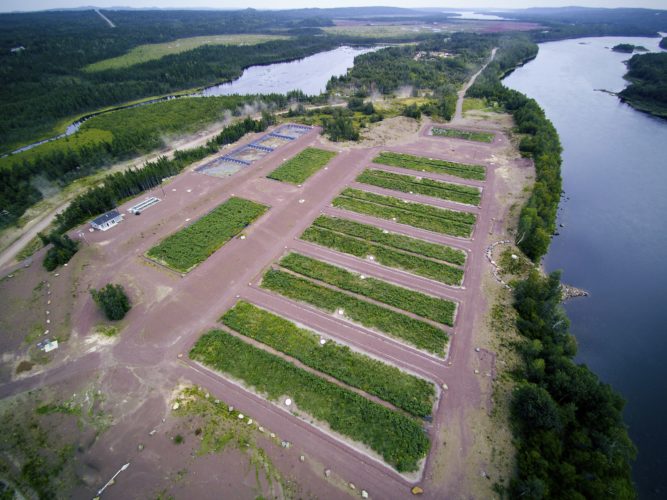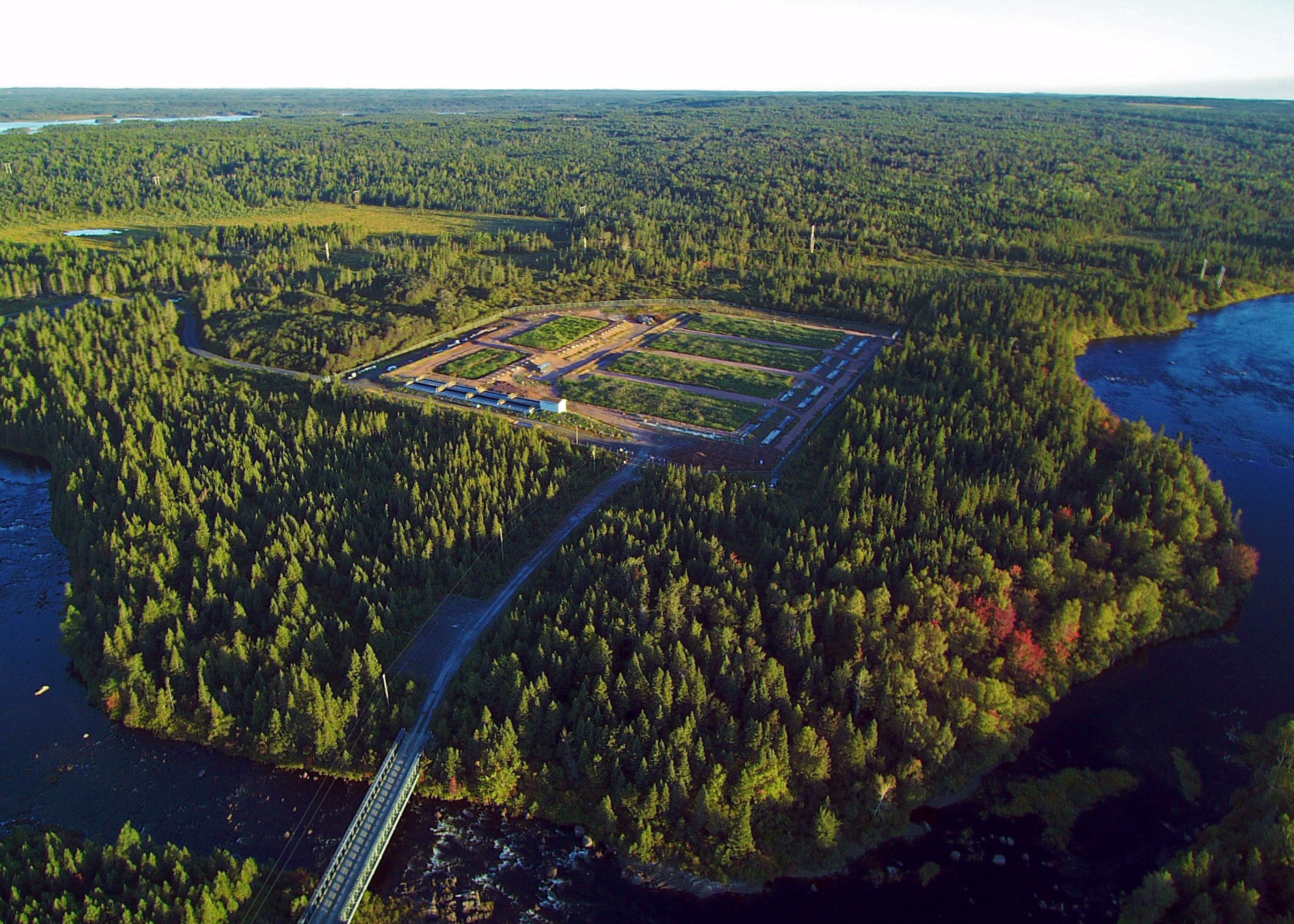Above photo: Bishop’s Falls: Abydoz Engineered Wetlands in Bishop’s Falls commissioned in 2016 with a Design Population of 4,300. Credit: Abydoz Environmental Inc.
When talking about fresh water in Canada, rivers and lakes come to mind first, but we often overlook one of the most important environments for water in Canada, wetlands. Wetlands represent 14 per cent of Canada’s landmass, and provide invaluable filtered and purified water to our streams, rivers, lakes, and aquifers. On top of that, wetland ecosystems are the most productive water purification system in the world, capable of providing more biological productivity per acre than tropical rainforests and coral reefs.
Looking to these invaluable natural resources in terms of wastewater treatment gives Canadians additional methods for introducing components of the circular economy into their communities and facilities.
The circular economy is an alternative to the linear economy of “make, use, dispose.” A circular economy encourages extended product lifespan, reduced energy inputs, and reusable and recyclable end products, representing a “cradle-to-cradle” approach. This process includes biomimetic approaches to the design of products and systems that models human industry on nature’s processes.
Through biomimicry and regenerative design, replicating the intricate processes observed in natural wetlands through engineered wetlands, have proven to be an effective, low maintenance, and economical method of providing secondary wastewater treatment in Canada for 20 years.
The Town of Bishop’s Falls in Newfoundland and Labrador had a series of outfalls that discharged directly into a freshwater river which is home to the largest population of North Atlantic Salmon in the world. The Town was looking for solutions that would provide high-quality effluent, while minimizing any increases to operational costs for the new facility. Engineered wetlands were chosen as the preferred solution, and by replicating the structures in natural wetlands, engineered wetlands encourage diverse and dense microbial growth within the hydraulically active zones of the wetland. With wetlands about the size of 15 hockey rinks, the Bishop’s Falls facility now releases effluent averaging below 10/10 mg/L TSS and BOD, far below the provincial regulations.

The root mass of the wetland vegetation provides a diverse habitat of variable aerobic and anaerobic areas, with a naturally high surface area for the growth of beneficial microorganisms. The wetland plants provide an ever-changing microbial habitat and prevent short-circuiting of the wetlands. This ensures that the hydraulic capacity stays constant throughout the beds, adding to the lifespan of the facilities, which exceed 40 years.
The hydraulic flexibility of natural wetlands has also been employed to ensure that adequate treatment is provided during average daily flow as well as stormwater flows. These fluctuations can be particularly extreme in communities with aging collection infrastructure and combined sewers. The rural towns of Appleton and Glenwood in Ontario have high flows during stormwater events and a receiving river with significant tourism and recreational activity, which meant that a flexible, low maintenance solution was required.
To ensure treatment of flows during stormwater events, like their natural counterparts the wetlands use integrated surface storage and are capable of filtration. This allows for the intermittent attenuation and treatment of higher flows with lower contaminant loadings during storm events.
During winter months, the vegetation dies back leaving the dry stocks standing on the beds. By leaving the stalks on the beds they continue to carry oxygen to the water column through capillary action. The stalks also trap snow on the beds, which insulates the wetlands, keeping temperatures higher and improving bacteriological activity during the colder months. During spring, the old plant stalks will fall on the wetlands providing an insulating layer of biomass for the next year. Where viable, the plants can also be harvested and used as biomass for energy, or as thatching and insulation for buildings.
In addition to the expected benefits of natural wetlands, engineered wetlands also eliminate the need for mechanical equipment such as blowers, pumps, and rotating equipment. This reduces the risk of plant failure due to wear, breakdowns, or electrical disruption, and eliminates any electricity needs. This is particularly valuable in remote or rural communities where repairs and replacement parts can be difficult and expensive to acquire, and skilled maintenance staff is required to operate the facilities.
Incorporating the circular economy using biomimicry and regenerative design of engineered wetlands can provide economical and effective wastewater treatment. Through providing high-quality effluent and stormwater solutions, the Towns of Appleton and Glenwood and Bishop’s Falls provide significant improvements to their wastewater systems with minimal inputs and costs. Engineered wetlands deliver low maintenance and low-cost solutions to wastewater treatment for municipalities, biosolids, landfills leachate, and industrial sources for a Canadian climate.
This article originally appeared in the July/August 2018 issue of Water Canada magazine.












